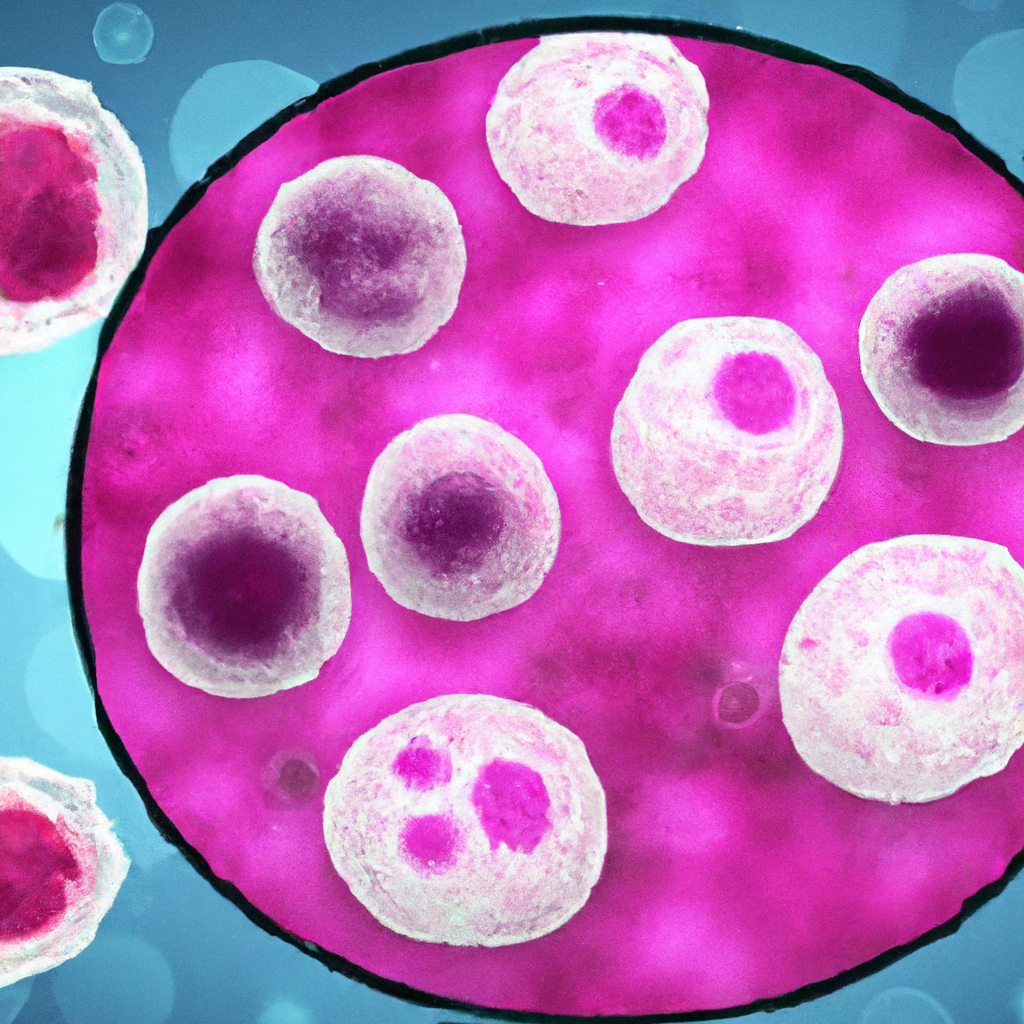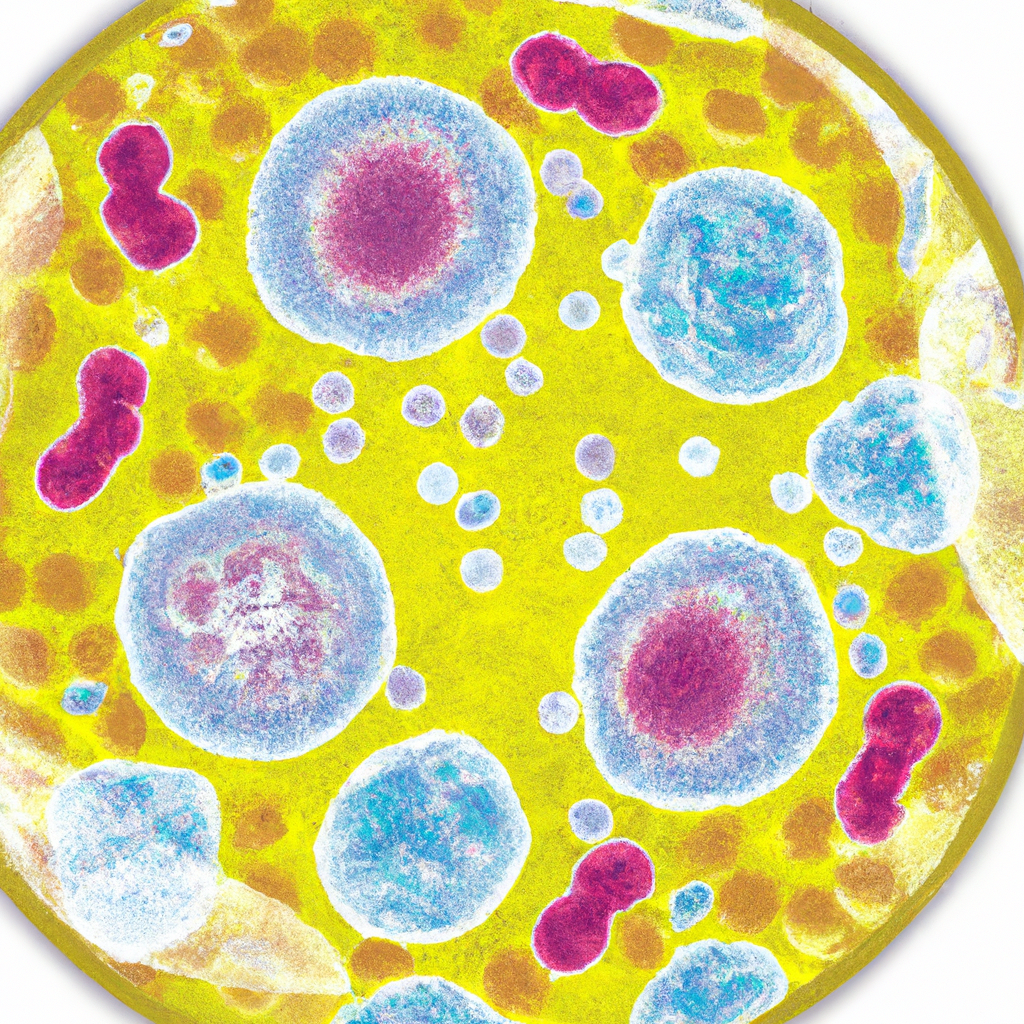Imagine the possibilities—the hope and promise that stem cells hold for the treatment of rare pediatric conditions in Malaysia. With their ability to differentiate into various cell types and repair damaged tissues, stem cells offer a beacon of hope to families facing the challenges of rare diseases. In this article, we explore the potential of stem cells as a groundbreaking therapy, delving into their applications, current research, and the remarkable stories of those whose lives have been positively impacted by this innovative approach. Discover how stem cells are revolutionizing the field of pediatric medicine and transforming the lives of children in Malaysia.

Introduction
Rare pediatric conditions pose a significant health concern in Malaysia, affecting the lives of many children and their families. These conditions often have limited treatment options, leaving patients with few opportunities for effective intervention. However, with advancements in medical research, stem cell therapy is emerging as a promising approach for the treatment of rare pediatric conditions. This article aims to provide an overview of these conditions in Malaysia, highlight the importance of finding effective treatments, and explore the potential of stem cells in addressing these challenges.
Understanding Stem Cells
Stem cells are undifferentiated cells that have the remarkable ability to develop into various specialized cell types in the body. They are categorized into different types based on their origin and potential to differentiate. Embryonic stem cells, which are derived from embryos, have the highest degree of pluripotency and can give rise to any cell type in the body. Adult stem cells, on the other hand, are found in specific tissues or organs and are responsible for repair and regeneration. They have limited differentiation potential compared to embryonic stem cells. Induced pluripotent stem cells (iPSCs) are reprogrammed adult cells that regain pluripotency and can be used for various research and therapeutic purposes.
The characteristics of stem cells, namely self-renewal and differentiation, make them invaluable in medical research and therapy. Stem cells can divide and replicate themselves while maintaining their undifferentiated state. This capacity for self-renewal allows for an almost unlimited supply of cells for therapeutic purposes. Moreover, stem cells can differentiate into specific cell types depending on the signals they receive from their surrounding environment. This differentiation potential enables them to replace damaged or diseased cells, leading to the potential for regenerative medicine.

Stem Cell Therapy
Stem cell therapy involves the transplantation of stem cells or their derivatives into the body to promote tissue repair and regeneration. The principles and techniques of this therapy depend on the type of stem cells used and the target condition. In some cases, stem cells are directly injected into the affected tissue or organ, while in others, they are injected into the bloodstream to allow them to migrate to the site of injury or disease. Researchers are also exploring the use of scaffolds and other biomaterials to enhance the survival and integration of transplanted stem cells.
The benefits of stem cell therapy are extensive. By replenishing damaged or dysfunctional cells, stem cell therapy has the potential to restore lost function and alleviate symptoms associated with rare pediatric conditions. Additionally, stem cells can secrete factors that promote tissue regeneration and modulate the immune response, leading to improved outcomes. However, like any medical intervention, stem cell therapy has its limitations. The potential for uncontrolled cell growth, immunological reactions, and ethical considerations are challenges that need to be carefully addressed.
Rare Pediatric Conditions in Malaysia
In Malaysia, several rare pediatric conditions pose significant challenges for patients and healthcare providers alike. These conditions encompass a wide range of genetic, metabolic, neurological, and immune disorders. Examples include spinal muscular atrophy, Duchenne muscular dystrophy, congenital metabolic disorders, cerebral palsy, and primary immunodeficiencies. Many of these conditions have limited treatment options, focusing primarily on symptom management rather than addressing the underlying cause. This underscores the urgent need for innovative therapeutic approaches such as stem cell therapy.
Current treatment options for rare pediatric conditions in Malaysia often involve a multidisciplinary approach, combining medications, physical therapy, and supportive care. However, these treatments often only offer limited relief and fail to address the root cause of the conditions. Stem cell therapy holds great promise in this context as it can potentially correct the underlying genetic or cellular abnormalities associated with these conditions. This targeted approach has the potential to revolutionize the treatment landscape and improve outcomes for affected children.

Promising Applications of Stem Cells
Stem cell therapy offers several promising applications in the field of rare pediatric conditions in Malaysia. Genetic disorders, such as spinal muscular atrophy and Duchenne muscular dystrophy, are caused by specific gene mutations that lead to impaired muscle function. Stem cell therapy holds the potential to replace the defective genes or promote the growth of healthy muscle cells, thereby addressing the core pathology of these conditions. Early studies in animal models and small-scale clinical trials have shown promising results, demonstrating the feasibility and safety of stem cell-based interventions for genetic disorders.
Metabolic disorders, such as congenital metabolic diseases, result from enzyme deficiencies that disrupt normal metabolic processes. Stem cell therapy offers the possibility of introducing functional enzymes or correcting the genetic mutations responsible for these deficiencies. By doing so, stem cell therapy can restore metabolic balance and prevent the progression of these debilitating conditions. Several ongoing research initiatives in Malaysia are exploring the potential of stem cells in the treatment of metabolic disorders, further highlighting the importance of this field.
Neurological disorders, including cerebral palsy and certain types of childhood epilepsy, present complex challenges due to the intricate nature of the central nervous system. Stem cell therapy offers hope by enhancing neural regeneration and promoting the formation of functional neural connections. Transplanted stem cells can potentially differentiate into neurons and support cells, replacing damaged or lost neural tissue. Additionally, stem cells can secrete neurotrophic factors that enhance neuronal survival and functional recovery. Although clinical applications of stem cell therapy for neurological disorders are still in the early stages, research efforts have shown promising results in preclinical and early clinical trials.
Immune disorders, such as primary immunodeficiencies, are characterized by defects in the immune system, leaving affected individuals susceptible to severe infections and other complications. Stem cell therapy has the potential to restore functional immune cells and provide long-term immune reconstitution. Hematopoietic stem cell transplantation, a well-established form of stem cell therapy, has been successfully used to treat certain primary immunodeficiencies. Ongoing research is focused on refining these approaches and expanding their applications to a wider range of rare pediatric immune disorders.
Clinical Trials and Research
Malaysia has emerged as an active hub for stem cell research and clinical trials in the field of rare pediatric conditions. The country is home to several ongoing clinical trials that aim to explore the safety and efficacy of stem cell-based interventions for various conditions. These trials involve collaboration between research institutions, healthcare providers, and government organizations, facilitating a comprehensive and multidisciplinary approach to scientific discovery. The results from these trials have the potential to shape future treatment guidelines and improve patient outcomes.
In recent years, stem cell research has yielded promising findings in the context of rare pediatric conditions. Preclinical studies using animal models have demonstrated the efficacy of stem cell-based therapies in addressing the underlying pathology of these conditions. These findings provide a strong foundation for the development of clinical interventions and guide further research efforts. Moreover, advancements in stem cell technologies, such as the use of iPSCs and gene editing techniques, have opened up new avenues for therapeutic development and personalized medicine.
However, conducting research in the field of Stem cell therapy for rare pediatric conditions comes with its fair share of challenges and ethical considerations. Ensuring patient safety and the ethical use of stem cells is of utmost importance. Researchers must adhere to strict ethical guidelines and regulations to protect the rights and well-being of patients involved in clinical trials. Balancing scientific progress with ethical considerations and public trust requires ongoing collaboration between researchers, healthcare professionals, and regulatory bodies.

Regulatory Framework and Guidelines
Malaysia has established a regulatory framework to govern the use of stem cells in medical research and therapy. The National Pharmaceutical Regulatory Agency (NPRA) is responsible for ensuring the safety, efficacy, and quality of stem cell products used in clinical trials and treatments. The guidelines set by the agency outline the requirements for obtaining ethical approval, conducting clinical trials, and monitoring the long-term effects of stem cell therapy. These regulations provide a robust foundation for stem cell research and instill public confidence in the field.
Specific guidelines exist for the use of stem cells in rare pediatric conditions. These guidelines emphasize the importance of evidence-based practice, informed consent, and long-term follow-up. They also address the ethical implications associated with the use of stem cells, including the need for appropriate donor selection, handling, and transplantation procedures. By adhering to these guidelines, researchers and healthcare providers in Malaysia can ensure that stem cell therapy remains safe, effective, and ethically sound.
Success Stories and Case Studies
Stem cell therapy has already demonstrated remarkable success in treating rare pediatric conditions in Malaysia. Case studies of patients who received stem cell therapy for various conditions provide tangible evidence of the potential of this approach. For instance, a child with spinal muscular atrophy experienced significant improvements in motor function and overall quality of life following stem cell transplantation. Similarly, children with metabolic disorders, such as phenylketonuria, have shown metabolic normalization and improved cognitive function after receiving stem cell therapy. These success stories highlight the transformative impact of stem cell therapy on the lives of affected children and their families.
In addition to specific case studies, patient testimonials further validate the efficacy of stem cell therapy. Parents and guardians of children who have undergone stem cell treatments often express their gratitude for the positive outcomes their children have experienced. Testimonials frequently highlight improvements in motor function, cognitive abilities, and overall well-being. The profound impact of these positive changes underscores the importance of continued research and access to stem cell therapy for rare pediatric conditions in Malaysia.

Collaborations and Partnerships
Addressing the complex challenges associated with rare pediatric conditions requires collaboration between researchers, healthcare institutions, and government organizations. In Malaysia, partnerships between these stakeholders play a crucial role in advancing stem cell research and therapeutic development. Research institutes collaborate with healthcare providers to conduct clinical trials and establish best practices for stem cell therapy. Government organizations, such as the Ministry of Health, provide support and funding for research initiatives and regulate the use of stem cells. These collaborations enable the seamless translation of discoveries from the laboratory to the clinic, improving patient outcomes and advancing the field.
International collaborations also contribute to the progress of stem cell research in Malaysia. Collaborative efforts with renowned research institutions and experts from around the world facilitate knowledge exchange, access to advanced technologies, and the development of global standards. These partnerships enhance research capabilities, broaden the scope of investigations, and foster a global community dedicated to advancing the field of stem cell therapy for rare pediatric conditions. By working together, researchers and healthcare professionals can overcome challenges more effectively and accelerate the development of innovative treatments.
Challenges and Future Directions
Despite the vast potential of stem cells in the treatment of rare pediatric conditions, several challenges need to be addressed to fully harness their therapeutic benefits. Cost and accessibility remain significant barriers to widespread adoption of stem cell therapy. High treatment costs and limited availability of specialized healthcare facilities prevent many families from accessing these potentially life-changing interventions. Efforts must be made to make stem cell therapy more affordable and accessible, ensuring that all affected children have equal opportunities to benefit from this approach.
Ethical concerns surrounding stem cell therapy also need to be carefully considered. Issues such as the source of stem cells, informed consent, and long-term effects are of paramount importance. Regulatory bodies, researchers, and healthcare professionals must work together to establish comprehensive guidelines and ensure that all ethical considerations are addressed. This will not only safeguard patient well-being but also contribute to the public acceptance and understanding of stem cell therapy.
The future of stem cell therapy for rare pediatric conditions in Malaysia lies in the exploration of innovative technologies. Advancements in gene editing, tissue engineering, and personalized medicine hold great promise for the development of targeted and precise therapeutic approaches. By combining stem cell therapy with other cutting-edge techniques, researchers can further optimize treatment outcomes, reduce potential risks, and customize interventions to suit individual patients’ needs. Continued investment in research and development, along with collaborations between interdisciplinary teams, will pave the way for groundbreaking advancements in the field.
In conclusion, the potential of stem cells in the treatment of rare pediatric conditions in Malaysia is vast. Stem cell therapy offers a targeted and personalized approach to address the underlying causes of these conditions, providing hope for improved outcomes and quality of life for affected children. Ongoing research, clinical trials, and collaborations between researchers, healthcare institutions, and government organizations are driving advancements in this field. While challenges surrounding cost, ethics, and accessibility remain, the future for stem cell therapy in Malaysia looks promising. With continued dedication and innovation, stem cell therapy has the potential to revolutionize the treatment landscape for rare pediatric conditions in Malaysia and empower children to lead healthier and more fulfilling lives.




